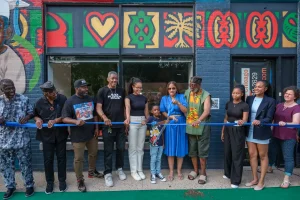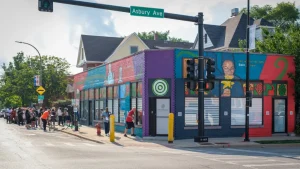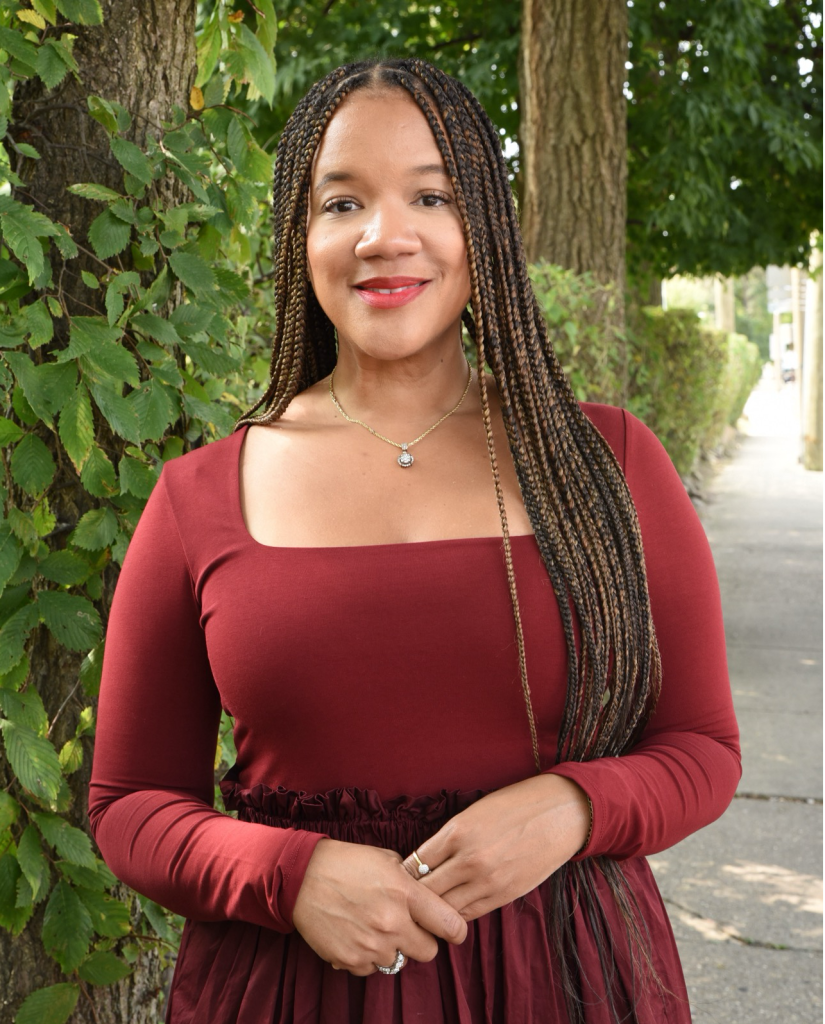
Let’s Talk Reparations Round 2: An Interview with Robin Rue Simmons
We told you we would continue our conversation on reparations, and we’re extremely excited to pick it up with revered reparations advocate Robin Rue Simmons!
In our first interview with reparations educator Briayna Cuffie, we focused on reparation advocacy in the nonprofit space. While we’ll continue that journey here, we’ll also go more deeply into reparations advocacy in the governmental space. Our next piece on reparations will likely be from a community perspective, so stay tuned!
Robin Rue Simmons is the Founder and Executive Director of the nonprofit FirstRepair, which informs local reparations initiatives across the country. She previously served as the 5th Ward Alderman of Evanston, Illinois. During her time as Alderman, Robin and other community leaders led the effort to create Evanston’s government-funded Black reparations legislation, the first of its kind in the United States. In our interview, Robin explains Evanston’s road to reparations, some of the twists and turns that the journey took, and advice for those who want to do reparations work in their own communities.
The reparations legislation in Evanston is an impactful project for multiple reasons. Firstly, it is foundational legislation that creates a precedent for other local and state governments to follow. Secondly, as Robin explains in our interview, it reflects the necessity of legal approaches to repairing the harms of slavery, Jim Crow culture, and white supremacy.
Lastly, it demonstrates the effectiveness and necessity of local advocacy and community building. Too often, progressive initiatives are concentrated at the federal level, with state and local politics pushed to the back bench. But local policy has just as important to our daily lives as federal policy, sometimes even more important. Evanston’s continuing road to reparations is a great example of putting those values into practice.
We hope that the work of the Evanston community and FirstRepair inspire you to advocate for reparations initiatives in your own local governments. If you need any guidance, please visit FirstRepair.org for toolkits and other resources.
This interview took place on July 30, 2024. It has been edited for brevity and clarity.
Emma Buchman, Magpie Editor:
Awesome, thank you again. The first question I always ask everybody is to tell us about yourself. Who are you and what do you do?
Robin Rue Simmons (Founder of FirstRepair & former 5th Ward Alderman for Evanston, IL):
My name is Robin Rue Simmons. I am the founder and executive director of FirstRepair. We’re a small not-for-profit that informs local reparations nationally.
After 20 years of small business advocacy for Black businesses, looking to empower Black families, and wealth-building – ways including access to home ownership and making policy while in elected office in Evanson, Illinois as a councilwoman – I landed on reparations. It is the only legislative response appropriate for the harms and crimes against Black folks, not only in America, but hyper-locally; for example, in my own city of Evanston.
So what I do full-time is inform, support, educate, provide technical assistance, strengthen coalitions, and make introductions to resources for other movement leaders all across the United States, whether they’re grassroots, or academics, or movement lawyers. We are all advancing reparations in our communities, with a North Star being a federal reparations bill, which could be H.R.40.
My day-to-day includes workshops, one-on-one strategy sessions, team-on-one strategy sessions, guest lectures at universities and colleges, and providing resources.
 For example, if you look at our website FirstRepair.org, there are multiple toolkits, maps, and other resources that could help folks that are joining the reparations movement to begin to make their first steps in a very long process.
For example, if you look at our website FirstRepair.org, there are multiple toolkits, maps, and other resources that could help folks that are joining the reparations movement to begin to make their first steps in a very long process.
Emma:
Could you explain, to you, what reparations are? You can do that either generally, or how they specifically apply to the Black community in the United States, or both.
Robin:
Well, generally, reparations are not novel and they’re not exclusive to the Black community. In fact, they have been paid many times – historically and currently – to other communities, just not the Black community.
Reparations are making amends. It is tangible redress for harms done to a particular community.
In the space that I am in, we are looking at Black reparations: reparations for the institution of slavery, and its vestiges and legacies – Jim Crow law, redlining, hyper-local anti-Black zoning laws, and many others. We are looking to redress those harms in tangible ways that we can measure by closing all of the racial gaps; including the wealth gap, which is mostly mentioned when you talk about reparations.
But it’s also healing our Black people: restoring our dignity, preserving our culture, allowing us to be safe from police terror and violence, allowing us access to the “liberty and justice for all” that this nation preaches, but has [been] withheld from the Black community.
That’s a long explanation, but I look at reparations as a comprehensive response, not one that is singularly focused on one area of repair. There are some that are very focused on wealth and cash as a form of reparations, others singularly focused on housing, and so on.
There are many that understand the international law standards of reparations, there’s five components. My goal and belief in reparations is that all of those areas be repaired under international law standards.
Emma:
Awesome, thank you for that explanation. It was very succinct and easy to understand…
Can you tell us about the local reparations program in Evanston: about how it came to be and how [it works]?
Robin:
Sure. So, in 2019 while I was on City Council, with many others, I led the passing of R.2619 – a resolution that established a reparations fund, seeding it with the first $10 million of recreational cannabis sales tax.
It established a reparations committee and prioritized our forms of redress based on a community process. That redress focus in Evanson includes housing, which we have begun dispersing. It also includes economic development and educational initiatives.
The way the program is working right now is in our first remedy for housing: we are giving a $25,000 direct benefit for Black residents that have been harmed by our city, specifically in zoning laws, which impacted our ability to build wealth through homeownership.
Historical documents showing racial housing discrimination against African Americans in Evanston, including a redlined map of the area. Images courtesy of the National Institute for Minority Economic Development.
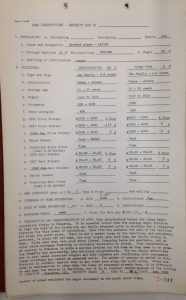
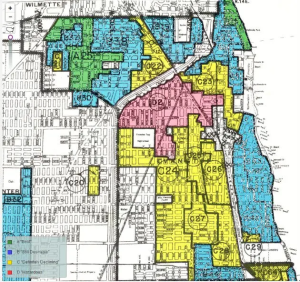
Homeownership is really a determinant for most all livability standards. So $25,000 is able to be used in a few ways, including towards a down payment of a home, to make any type of improvement, to pay down a mortgage balance, or it can be received as a direct cash benefit.
In addition to that, we’re looking at other forms of redress. More broadly, and I think even more importantly, we are not looking at only the city of Evanston, but other institutions, other levels of government – including the state of Illinois and ultimately the United States Congress – for addressing the harms against Black communities.
In Evanston, it is a mayoral appointed committee of seven, which I chair. There are four community stakeholders. I’m a stakeholder on that committee, and there are three elected stakeholders that serve the predominant Black communities in our city.
We are staffed by an incredible staff lead, Tasheik Kerr. Without our staff lead and the support of our city manager’s office, our work would really suffer. Because we have access to our city manager’s office and the leadership of Tasheik Kerr, we have been able to accelerate our work in Evanston. Many of those milestones have been reported on, including the direct benefits being dispersed in Evanston.
Emma:
Amazing, thank you. That ties in nicely to the next question: why is it important for different levels of government to have their own reparations programs or structures?
Robin:
Well, it’s important because it’s the only way we’ll get close to full repair. Ultimately, Congress has the capacity to address, more comprehensively, the harms that have been done.
But it wasn’t just Congress, it was also state law. There were also municipal laws and program actions/incidents that were independent of the federal government – inspired by the institution of slavery, but still independent.
Every level of government, every institution, every industry, families that have harmed Black people in the United States, [they all] have a responsibility. What we’re seeing now is great political will and allyship and coalitions developing around hyper-local initiatives.
Emma:
That’s really amazing, I love the emphasis on local work. I don’t think enough emphasis is put on building from the ground up on a local government level, to the state, to the federal.
What has been the community response to Evanston’s reparations program?
Robin:
Initially, because there has been so much disappointment [among] the Black community with the government, there wasn’t as much engagement as ideal. But we had enough engagement, of course, to be able to move the legislation forward, and we passed it with overwhelming support.
We have implemented and grown. The growth really has come from our interfaith community; also raising an additional million dollars to support and sustain the work.
The response now is appreciation. It’s hope, more than anything. The city did exactly what they said they were going to do when we didn’t believe that reparations could even be said. We certainly didn’t believe that a resolution could be passed; and then to set aside 10 and then $20 million and commit to a form of redress and ultimately to disperse reparations?! We have many residents that are really just overwhelmed and overjoyed that our city has made such a tangible commitment, a measurable commitment, and want the work to continue.
No matter how much we acknowledge and celebrate the milestone, we all understand that $25,000, independent of any more, is insufficient. But we do know and understand that it is a tangible first step, one that we have been building on and the nation has been building on.
In 2019, Evanston was the only place that had passed a tax-funded local reparations initiative. Now there are over a hundred different initiatives that have been inspired by Evanston to begin the process of reparations appropriate for their city or institutions’ history, the harm, and the community that they’re serving. We see more and more support.
We also saw under the leadership of the late and great new ancestor, may she rest in peace, Congresswoman Sheila Jackson Lee. We saw that the support for reparations grew to 218 co-sponsors in the House, a Senate companion bill, and more political will. Unfortunately, there wasn’t a floor vote, but it did pass the judiciary committee a few years ago. That was the first time since the legislation was introduced by Congressman John Conyers in 1989.
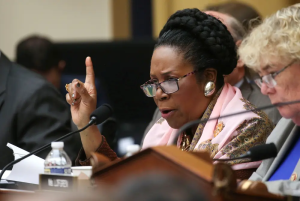
Emma:
Thank you for that. I didn’t know that Sheila Jackson Lee died! That’s really sad.
Robin:
It’s very sad, and in fact, I’ll be traveling to Houston tomorrow for the services they have… There will be many ways to celebrate her incredible life and legacy over the next few days, but I will be there for the life celebration…
Emma:
I’m sure she’d be appreciative of your showing of respect. I’ve heard a lot about the great things she’s done, we’ve lost a good advocate in Congress.
What are the steps you would suggest to elected officials to replicate a reparations program? What would you suggest the first steps be?
Robin:
A champion needs to be identified to coordinate and be the voice for the people, whether it’s a legislative or institutional pursuit for reparations. I’ve seen the question [of reparations] be called by a strong legislative leader – we’ve also seen coalitions, organizations, stakeholders, in some cases local branches of the NAACP or the National Urban League…
But a champion needs to be identified, and then the community needs to be convened. One of the first and most important best practices of reparations is that the harmed community is informing the process, prescribing what redress looks like, and taking lead.
There will need to be some type of community convening to do public education. In the beginnings of my reparations education, the only real model that I was familiar with was compensation – the Japanese community, Holocaust survivors… receiving cash. So education on what exactly are reparations, how it’s different from ordinary public policy, what the models are, what the legal framework is to make it constitutional so that it can be viable and successful…
Then the community needs to convene to share oral history and the facts on what the harm is, and begin to prescribe what forms of reparations are wanted in the Black community. Those are some of the first steps.
There are many other equally important steps, which include identifying a legal team or legal expert to develop that legal framework and also prepare, unfortunately, for legal defense. There are many in this nation that do not want to see Black people repaired and will sue. Evanston has been sued.
In addition to that, there’ll need to be a harm report developed. That is a foundational tool that will inform the process. It will identify who exactly is harmed, which is going to be helpful for eligibility – who in the community is eligible for reparations. It will detail the harm, which will help in developing the forms of repair, the type of redress, especially if you’re working with a narrow tailoring approach as a legal framework.
Those things will help you think about how you might fund the reparations. In our case, we use home rule taxes in Evanston. One is a cannabis sales tax and one is a real estate transfer tax, but they’re home rule taxes nonetheless.
There are a few other steps: organizing an ally community is going to be important; ongoing public education, some sort of regular meeting cadence for public education is going to be important.
…A lot of this is detailed in our toolkits online, and this is much of the work that we do at FirstRepair when we meet one-on-one, or go into communities and have workshops.
Emma:
Thank you so much, that’s so helpful. This is the last question…
Every community that’s been harmed by U.S. and European white supremacy needs its own reparations based on the harms that were perpetuated against them… If we were at a point where everyone said, “Yes, we’re ready to do reparations, there’s no holding back now, let’s just do it,” how would you confront needing to give different reparations to different communities in different ways?
Robin:
Well, the work is specific to community and injury. So it would all start with a harm report. If there are different communities that are seeking reparations, then a specific harm report will need to happen.
The state of California was the first state to pass reparations; but then even within the state of California, you have multiple cities – you have San Francisco, Sacramento, Los Angeles… Palm Springs is even more specific, with an initiative led by Areva Martin. You should learn more about that as it relates to housing and land.
So the harm report really is the defining document to fairness, to understand exactly how and who and when to advance reparations in a Constitutional way.
Emma:
Perfect… Thank you… This was really informational and really helpful. So thank you so much for your time.
July 16, 2024 – Photos of the mural unveiling at FirstRepair headquarters, which serves over 100 local communities. The mural was painted by Damon Lamar Reed, who has already painted several other murals in Evanston.
The first photo features, from left to right: FirstRepair Board Member Kamm Howard; Institute of the Black World 21st Century President Dr. Ron Daniels; mural artist Damon Lamar Reed; Crawford Richmond; FirstRepair Staff Member Bailee Rue; Karson Rue, grandson of Robin Rue Simmons; FirstRepair Founder Robin Rue Simmons; Buford Fennell; FirstRepair Staff Member Kierra Abrams; FirstRepair Board & Staff Member Elisa Walker; and FirstRepair Chief Operating Officer Victoria Shire. Photo credit: Joerg Metzner.
Sources:
- FirstRepair
- “House repairs, a car, grandkids: Where Evanston’s reparations payments are going”
- “Photos: Reparations nonprofit FirstRepair unveils new mural”
- “Redlining Reparations: Evanston Illinois takes a Lead in Addressing the Race Wealth Gap”
- “Reparations nonprofit FirstRepair serves over 100 local communities, to open resource center in December”
